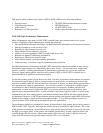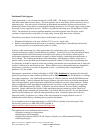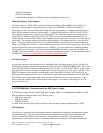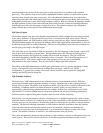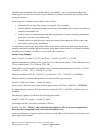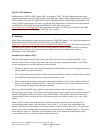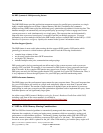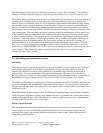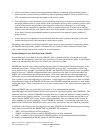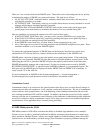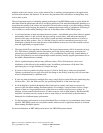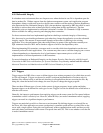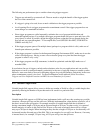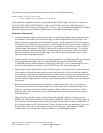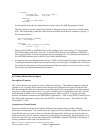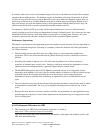y Allows customers to replace current programming methods of capturing and transmitting journal
entries between systems with more efficient system programming methods. This can result in lower
CPU consumption and increased throughput on the source system.
y Can significantly reduce the amount of time and effort required by customers to reconcile their source
and target databases after a system failure. If the synchronous delivery mode of remote journal is used
(where journal entries are guaranteed to be deposited on the target system prior to control being
returned to the user application), then there will be no journal entries lost. If asynchronous delivery
mode is used, there may be some journal entries lost, but the number of entries lost will most likely be
fewer than if customer programming methods were used due to the reduced system overhead of
remote journal.
y Journal receiver save operations can be offloaded from the source system to the target system, thus
further reducing resource and consumption on the source system.
Hot backup, data replication and high availability applications are good examples of applications which
can benefit from using remote journal. Customers who use related or similar software solutions from
other vendors should contact those vendors for more information.
System-Managed Access Path Protection (SMAPP)
System-Managed Access Path Protection (SMAPP) offers system monitoring of potential access path
rebuild time and automatically starts and stops journaling of system selected access paths. In the unlikely
event of an abnormal IPL, this allows for faster access path recovery time.
SMAPP does implicit access path journaling which provides for limited partial/localized recovery of the
journaled access paths. This provides for much faster IPL recovery steps. An estimation of how long
access path recovery will take is provided by SMAPP, and SMAPP provides a setting for the acceptable
length of recovery. SMAPP is shipped enabled with a default recovery time. For most customers, the
default value will minimize the performance impact, while at the same time provide a reasonable and
predictable recovery time and protection for critical access paths. But the overhead of SMAPP will vary
from system to system and application to application. As the target access path recovery time is lowered,
the performance impact from SMAPP will increase as the SMAPP background tasks have to work harder
to meet this target. There is a balance of recovery time requirements vs. the system resources required by
SMAPP.
Although SMAPP may start journaling access paths, it is recommended that the most
important/large/critical/performance sensitive access paths be journaled explicitly with STRJRNAP. This
eliminates the extra overhead of SMAPP evaluating these access paths and implicitly starting journaling
for the same access path day after day. A list of the currently protected access paths may be seen as an
option from the DSPRCYAP screen. Indexes which consistently show up at the top of this list may be
good candidates for explicit journaling via the STRJRNAP command. As identifying important access
paths can be a difficult task, SMAPP provides a good safety net to protect those not explicitly journaled.
In addition to the setting to specify a target recovery time, SMAPP also has the following special settings
which may be selected with the EDTRCYAP and CHGRCYAP commands:
y *MIN - all exposed indexes will be protected
y *NONE - no indexes will be protected; SMAPP statistics will be maintained
y *OFF - no indexes will be protected; No SMAPP statistics will be maintained (Restricted Mode)
It is highly recommended that SMAPP protection NOT be turned off.
IBM i 6.1 Performance Capabilities Reference - January/April/October 2008
© Copyright IBM Corp. 2008 Chapter 4 - DB2 Performance
55



